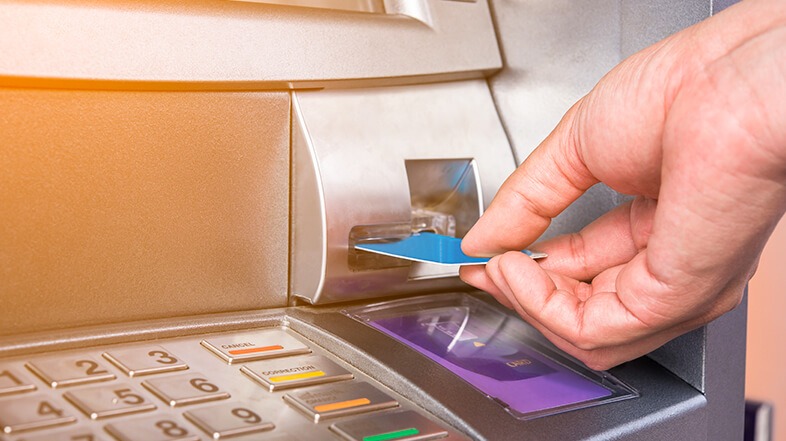February 20, 2023
A record number of Americans are taking hardship withdrawals and tapping into their 401(k)s.
According to Fidelity, “Participants taking hardship withdrawals from their accounts rose to 2.4% last year, up from 1.9% in 2021.”¹ This represents the highest share of hardship withdrawals recorded by the financial services firm.
Vanguard also recorded a rise in hardship withdrawals in 2022. “About 2.8% of participants in its plans made hardship distributions in 2022, up from 2.1% in 2021.”²
While alarming, it isn’t surprising as last year saw record high inflation, rising interest rates, and a 15% year-over-year increase in credit card balances.³
While more 401(k) investors are tapping into their retirements, Fidelity reports investors are taking out smaller amounts. “The typical 401(k) hardship withdrawal in the first quarter of 2021 was $3,900, but that dropped to $2,200 in the fourth quarter of 2022.”⁴
Whether 401(k) investors need the money to cover medical bills, to stay off eviction, or to pay tuition expenses, it’s clear they’re hurting for extra cash right now.
Before you dip into your retirement savings, it’s critical to understand the implications of doing so.
From taxes to losing more money than you planned, there’s a lot to consider before making the move.
Keep reading for a breakdown of the 401(k) hardship withdrawals and alternatives to tapping into your 401(k).
Defining the Hardship Withdrawal

Hardship withdrawals are defined by the IRS as taking money out of your 401(k) because of an immediate financial need that’s limited to the amount to satisfy the hardship need – not the amount you want.
The need of the employee also covers the employee’s spouse or dependents.
With a 401(k) hardship withdrawal, you pull money from your savings, and you cannot pay it back like you do a 401(k) loan.
Whether you qualify for a hardship withdrawal depends on certain circumstances “deemed to be immediate and heavy” and “limited to the amount necessary to satisfy that financial need” defined by the IRS as a hardship.⁵
These include:
- Certain medical expenses.
- Costs relating to the purchase of a principal residence (excluding mortgage payments).
- Tuition and related educational fees and expenses.
- Payments necessary to prevent eviction from, or foreclosure on, a principal residence.
- Burial or funeral expenses.
- Certain expenses for the repair of damage to the employee’s principal residence that would qualify for the casualty deduction under IRC Section 165.⁶
If you qualify for a hardship withdrawal, the money you take out will be taxed as ordinary income if you are under age 59½, but you won’t have to pay the 10% penalty.
Key Factors to Consider before Pulling Money from Your 401(k)

#1 First things first – not all plans allow for the hardship withdrawal.
If your plan does allow for it, you will likely have to provide proof of the hardship and get approval that it meets the criteria.
#2 The money may not be immediately available. Each plan has a different set of rules it must follow so it may take weeks to get the money from your 401(k). If you need cash ASAP, you need to look for other alternatives.
#3 Taxes are another thing to consider.
Whether you qualify for a hardship withdrawal or not, you must pay taxes on the amount withdrawn – and it’s considered ordinary income.
The last thing you want to do is get cash for a short-term need, only to find out it’s bumped you up to the next tax bracket.
If you’re willing to take the tax hit, we still recommend you speak with your CPA or tax professional to find out the real cost of cashing out. When all is said and done, the cost may outweigh the need.
#4 Lastly – and this is a big one – you should avoid taking out money from your 401(k) when the market is down.
Remember, you only lose money if you cash out at the bottom of the market. Taking a 401(k) withdrawal when the market is low means you have to withdraw a larger percentage of your account.
Alternatives to a 401(k) Hardship Withdrawal

In an ideal world, you wouldn’t touch your 401(k) until retirement.
However, life happens, and sometimes you have to do what you have to do. We get it.
Here are a few alternative options to the 401(k) hardship withdrawal should you need money to cover an emergency.
Medical Expenses: There are numerous companies that provide financing options, such as CareCredit or accessone. Or for qualified medical expenses, you can use your HSA savings.
Housing and Living Expenses:
- Tap into other non-retirement savings, such as brokerage accounts.
- Take money from your Roth IRA.
- Take out a home equity line of credit. Because you use your home as collateral, you may get a better interest rate and a longer payback.
- Take out an unsecured personal loan to get you through.
- Apply for a 0% credit card, put the money on that card, and then pay off interest-free before the interest-free promotional period expires.
- Ask family or friends for a personal loan. If you go this route, don’t just borrow the money. Make it more formal so you take the emotion out of it. Draw up a contract with a payment schedule – then stick to it.
Another option is to take out a 401(k) loan.
With a 401(k) loan, you borrow from yourself, and you have to pay it back with interest, typically within 5 years of taking the loan.
A 401(k) loan is not a distribution like the hardship withdrawal.
The benefit here is that you do not have to pay penalties and taxes should you pay it back on time. And, the interest you pay on the loan goes back into your retirement savings.
There is a downside: In the event you lose your job or quit, you will be forced to pay back the loan in full before tax day the following year.
If you can’t pay it back on time, the loan will be treated as an early withdrawal, and the unpaid loan balance will be considered a taxable distribution.
Also, if you are under age 59½, you will have to pay a 10% federal tax penalty on the unpaid balance along with income taxes on the balance of the loan.
Final Thoughts

Should you need money for a hardship, whatever you decide to do, we recommend speaking with a tax professional, as well as a financial advisor.
Better Prepare for a Life of Abundance in Retirement. Check Us Out on YouTube.
Sources:
- https://www.cbsnews.com/news/401k-hardship-withdrawals-at-record-fidelity-vanguard/
- https://www.cbsnews.com/news/401k-hardship-withdrawals-at-record-fidelity-vanguard/
- https://www.newyorkfed.org/microeconomics/hhdc
- https://www.cbsnews.com/news/401k-hardship-withdrawals-at-record-fidelity-vanguard/
- https://www.irs.gov/retirement-plans/retirement-plans-faqs-regarding-hardship-distributions#2
- https://www.irs.gov/retirement-plans/plan-participant-employee/retirement-topics-hardship-distributions















